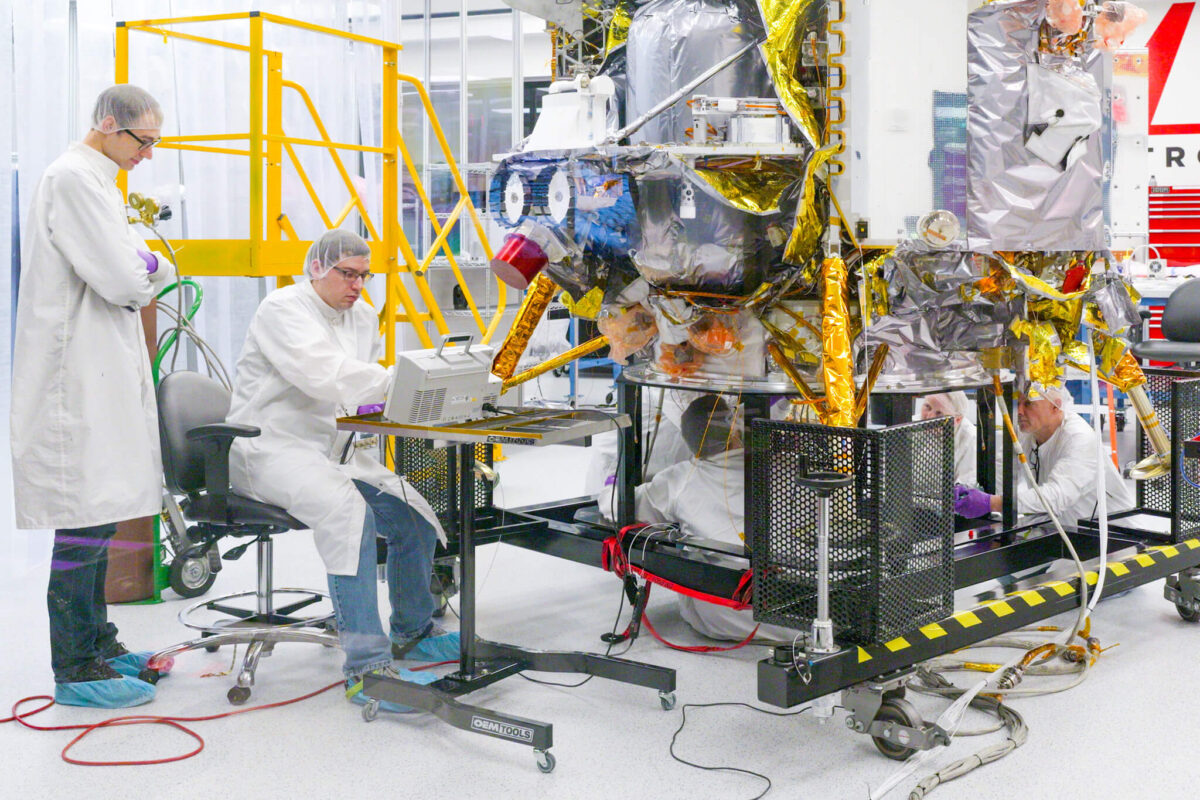The Peregrine lunar lander, built by Pittsburgh-based Astrobotic Technology, is set to become the first US moon lander since the Apollo missions over 50 years ago. Scheduled for launch on Monday from Cape Canaveral, this mission represents a significant milestone in the resurgence of lunar exploration by the United States.
The Peregrine mission, named after the fastest animal on Earth, aims to deliver a variety of payloads to the lunar surface, including NASA scientific instruments, mementos, and even some of the ashes of Star Trek creator Gene Roddenberry. Carnegie Mellon University has their Iris and Moon Ark payloads on board. This commercial operation is part of NASA’s Commercial Lunar Payload Services (CLPS) program, which pays private companies to transport scientific equipment to the moon.
John Thornton, CEO of Astrobotic, knows there is a lot riding on the mission. Emotions are high at his mission control located in Pittsburgh’s Northside. A dozen computers and screens have stood empty for a year waiting for this moment. “There’s a lot on the line.” Thornton said.
The mission will launch aboard the Vulcan Centaur rocket, developed by United Launch Alliance (ULA), a joint venture between Lockheed Martin and Boeing. The Vulcan rocket’s inaugural flight adds to the mission’s complexity and risk. Despite ULA’s perfect mission success rate with its predecessor rockets, the new rocket has never flown before.
Peregrine’s target landing site is Sinus Viscositatis, also known as the Bay of Stickiness, an ancient lava flow on the moon’s surface. The lander will carry 10 payloads, including five NASA experiments designed to measure radiation levels, surface and subsurface water ice, the magnetic field, and the exosphere. Notably, Carnegie Mellon University’s Iris Rover will become the first US robot to explore a distant celestial body.
The mission also includes controversial payloads, such as a copy of Wikipedia, a physical coin loaded with one bitcoin, and various mementos. Space enthusiasts are divided over whether these items help with the publicity of the mission or are simply distractions. NASA reminds the public that Peregrine is a commercial mission and it cannot dictate what Astrobotic includes.
Astrobotic’s Peregrine mission marks the first in a series of planned lunar landings under the CLPS program. Following Peregrine, Houston-based Intuitive Machines plans to launch its lander in mid-February. These missions are designed to maintain a sustained US presence on the moon, laying the groundwork for NASA’s Artemis program, which plans to send astronauts back to the lunar surface within the next few years.
The Peregrine lander will operate for about ten days, gathering data and conducting experiments until the lunar night begins, rendering its instruments too cold to function. This mission, while risky, is a crucial step toward the US reclaiming its role as a leader in lunar exploration and harnessing the moon’s resources for future missions.
Peregrine’s target landing site is Sinus Viscositatis, also known as the Bay of Stickiness, an ancient lava flow on the moon’s surface. The lander will carry 20 payloads, including five NASA experiments designed to measure radiation levels, surface and subsurface water ice, the magnetic field, and the exosphere. Notably, Carnegie Mellon University’s Iris Rover will become the first US robot to explore a distant celestial.
The mission also includes controversial payloads, such as a copy of Wikipedia, a physical coin loaded with one bitcoin, and various mementos. Space enthusiasts are divided over whether these help with the publicity of the mission or are simply a detraction. NASA reminds us that Peregrine is a commercial mission and it cannot dictate what Astrobotic includes.
Astrobotic’s Peregrine mission marks the first in a series of planned lunar landings under the CLPS program. Following Peregrine, Houston-based Intuitive Machines plans to launch its lander in mid-February. These missions are designed to maintain a sustained US presence on the moon, laying the groundwork for NASA’s Artemis program, which plans to send astronauts back to the lunar surface within the next few years..
The Peregrine lander will operate for about ten days, gathering data and conducting experiments until the lunar night begins, rendering its instruments too cold to function. This mission, while risky, is a crucial step toward the US reclaiming its role as a leader in lunar exploration and harnessing the moon’s resources for future missions.
Correction: The article originally said there were 10 payloads onboard. There are “about 20” payloads onboard according NASA.

